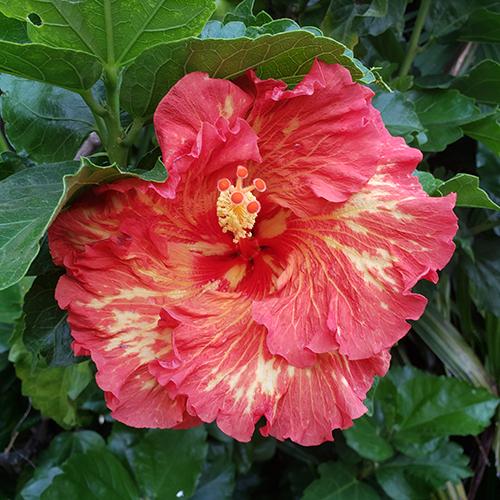
Benefits of Hibiscus
Hibiscus helped save our puppy We found a pedigree Golden retriever for sale for $50 in the local paper. At the time, they were selling


Studies on plants indicate that some of them can actually make us smarter. The new term for phytochemicals that enhance mental function is Smart Drugs, and they are forming the backbone of a blossoming field of medicine known as nootropics. The term nootropic comes from a Greek word meaning “acting on the mind.”
As an educator (approaching 70) responsible for remembering a great deal of information on a range of topics, I have great need of a high-functioning brain. For some time now I have been taking supplements to enhance learning and memory. Being an herbalist, my choice for this are compounds derived from plants.
In the past, we’ve heard a lot about the astounding benefits on cerebral function of such herbs as ginkgo biloba and gotu kola. Other, less exotic herbs such as peppermint, rosemary and sage have also been used for ages to increase oxygenation to the brain.
How do they do this
They do this by dilating blood vessels, improving oxygen and glucose utilization, and concentrating neurotransmitters such as acetylcholine involved in the process of memory formation.
Vinpocetine
Red blood cells carrying oxygen to brain cells (neurons) have to pass through very narrow capillaries. Neurons also need glucose delivered through these tiny capillaries. Vinpocetine, a derivative of an alkaloid in the lesser periwinkle, Vinca minor, dilates blood vessels, improving oxygen and glucose utilization, and concentrating neurotransmitters involved in the process of memory formation.

More oxygen and glucose delivery increases ATP (energy) in neurons. Vinpocetine also inhibits platelet aggregation, helping to prevent blockage of these vessels (preventing strokes). The improved blood flow also helps protect heart function, prevents macular degeneration (a leading cause of blindness in the elderly), improves hearing and inner ear problems, and even lessens depression and fatigue.
Huperzine A
Another dietary supplement, Huperzine (HOOP-ur-zeen) A, derived from the Chinese club moss Huperzia serrata, has received some interest as a potential treatment for Alzheimer’s disease.
Huperzine A acts as a cholinesterase inhibitor and works by improving the levels of neurotransmitters in the brain. Small early studies suggest that huperzine A may improve our memory and protect nerve cells, which could slow the cognitive decline associated with Alzheimer’s.

A recent meta-analysis found evidence that huperzine A may significantly improve cognitive performance in patients with Alzheimer’s disease. In addition to its role as a cholinesterase inhibitor, another study suggests that huperzine A appears to have many protective effects on the brain.
Alpha-GPC
I also take Alpha-GPC, a chemical released when a fatty acid found in soy and other plants breaks down. It seems to increase acetylcholine, enhancing memory and learning functions.
In Europe alpha-GPC is a prescription medication for the treatment of Alzheimer’s disease. In the United States alpha-GPC is available as a dietary supplement to improve memory.
Other uses for alpha-GPC include treatment of various kinds of dementia, stroke, and “mini-stroke” (transient ischemic attack, TIA).
Give them time
Natural medicine makers and pharmaceutical interests alike are scrambling to develop nootropic combinations, many of which are now being marketed world-wide as an aid in activities requiring highly focused attention such as teaching, technical writing and computer operation. But don’t look for quick results from these wonder drugs. Tonic herbs don’t work overnight. They work gradually over time, achieving optimum results after several weeks of continuous use.

When vinpocetine is given orally (10 mg three times a day), which is the normal method, subjective and objective improvement is usually noted between three and six weeks.
How much I take daily
Vinpocetine – 30 mg
Huperzine A – 400 mcg
Alpha GPC – 600 mg
Teaching comprehensive holistic education since 1985.
We are currently offering interactive hybrid courses including Herbal Fundamentals, Energy Healing, Aromatherapy and Clinical Herbology
Hybrid means you may choose to participate in each individual class in the hybrid course online or in person.
All of our products are made with love from organic, all-natural and ethically sourced ingredients.
We began making and perfecting our own herbal remedies more than thirty years ago and offer our favorite products for purchase.

Hibiscus helped save our puppy We found a pedigree Golden retriever for sale for $50 in the local paper. At the time, they were selling
Hawthorn Berry Hawthorn is known as the heart herb for its many benefits as a heart tonic. The berry has been a key part of

Can you take herbal supplements to arm your immune system? You probably know that zinc, vitamin D and vitamin C are gotta-have-its. How about herbal

While attending San Diego State College in the early seventies, my work-study job was in the vivarium, a room for keeping and raising animals for